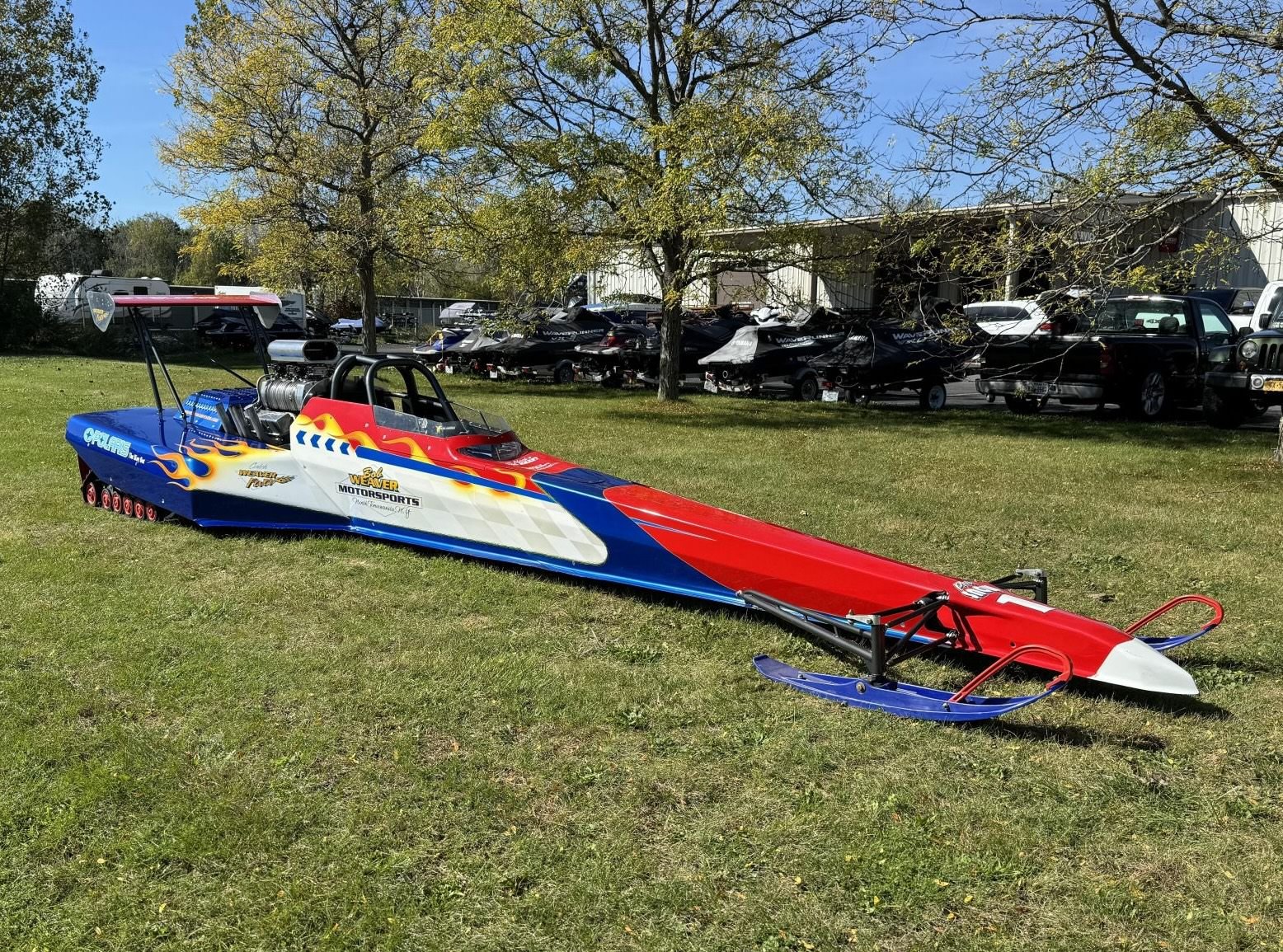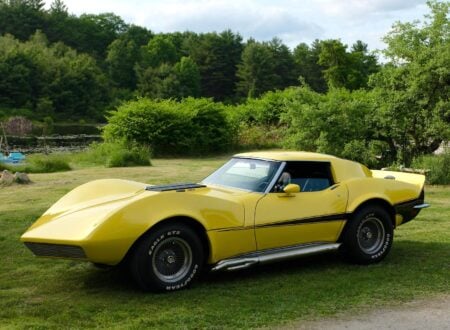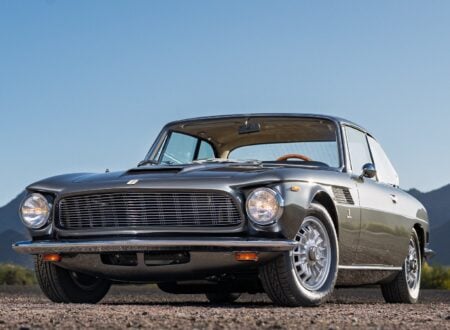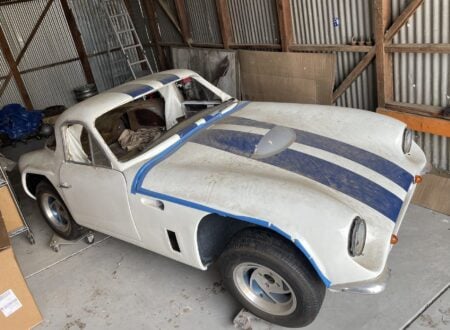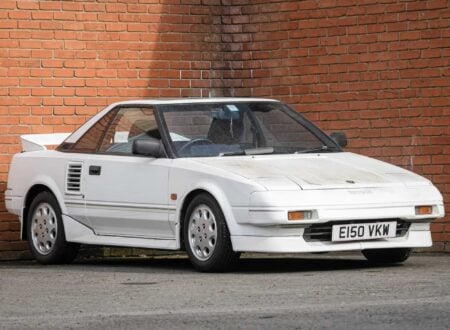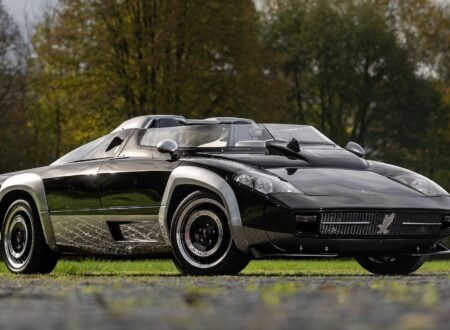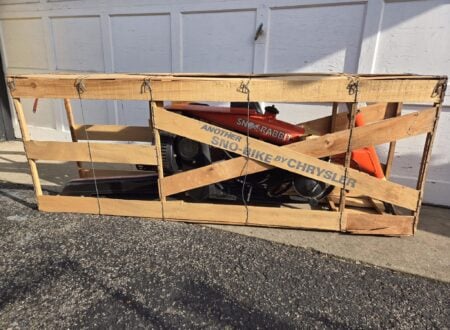This is snowmobile dragster powered by a mid-mounted supercharged 350 cubic inch (5.7 liter) V8. It has a tubular steel chassis, a cockpit with a full roll cage, and all the requisite controls including a steering yoke.
Snowmobile drag racing has a fascinating history, and it somehow manages to be even more dangerous than standard drag racing thanks to the fact that races often happen on the ice of frozen lakes. Some have managed speeds of over 200 mph in just 1/4 mile – and once again – this is all happening on ice.
Fast Facts – A Supercharged Snowmobile Dragster
- This snowmobile dragster was built in 2001, it has a mid-mounted supercharged 350 cubic inch (5.7 liter) V8 engine with a tubular steel chassis and lightweight fiberglass body. Designed for ice racing, it has a roll cage, steering yoke, and pushrod suspension with plastic skis out front.
- Snowmobile drag racing began in the 1960s as racers adapted dragster designs for snow and ice. Speeds reached over 200 mph on ice-covered lakes, with events typically held solo for safety. Manufacturers like Rupp and Arctic Cat helped grow the sport with sleek, high-performance dragsters that helped push the sport forwards.
- The dragster boasts a Powerglide 2-speed transmission, chain-driven sprockets, dual Polaris drive tracks, and Wilwood disc brakes. It is powered by a V8 engine with a B&M supercharger, dual Holley carburetors, and a Hilborn-style air scoop.
- Offered for sale in Wheatfield, New York, this dragster is being sold on Bring a Trailer with a bill of sale.
A Brief History Of Snowmobile Drag Racing
The true history of snowmobile drag racing began in the 1960s, though it’s worth noting that snowmobile racing in general had started much earlier than this, probably around the time the second snowmobile was made.
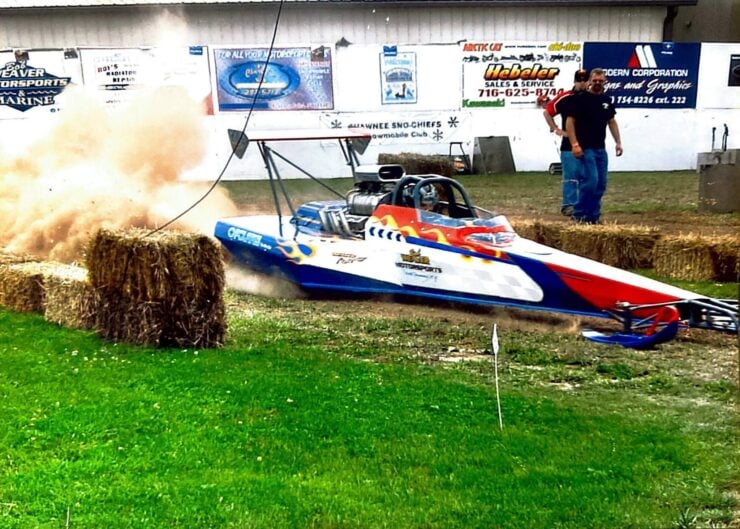

As automotive drag racing had evolved from the 1950s into the 1960s paradigm shifts in technology and engineering had occurred. Many drag racers in northern regions were forced to pack their cars away for the winter, and so it’s perhaps not a shock that some of them decided to go racing on the snow and ice in snowmobiles that were strongly influenced by then-current dragster designs.
Snowmobile manufacturers like Rupp and Arctic Cat were among the first major companies to get behind the burgeoning sport. The Rupp Super Sno-Sport was one of the most memorable, and it was followed by the Boss Cat, undeniably one of the sleekest-looking vehicles ever made.
Unlike with regular drag racing, in which competitors typically race each other in parallel down a 1/4 mile strip through a series of heats, snowmobile dragsters typically race solo down the 1/4 mile on lake ice. This is due to the fact that directional control can be tricky and it would be easy for sleds to collide if they were racing side-by-side.
Soon the records began to fall, 100 mph was broken, followed by the 120 mph and 130 mph marks. Soon the seemingly impossible 200 mph mark had been broken and snowmobile drag racing would never be the same again.
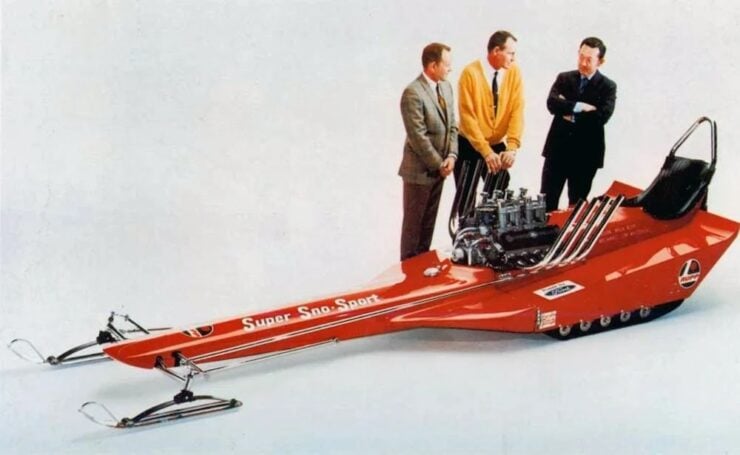

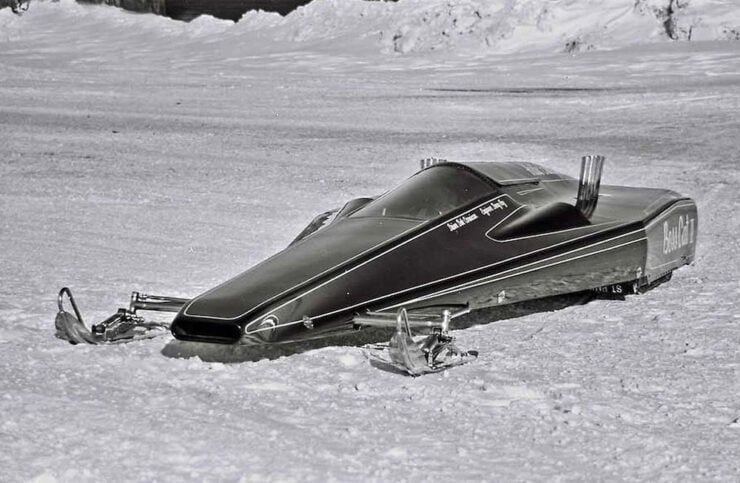

Today the sport of drag racing on ice is far smaller than its asphalt-based counterpart but the racers are no less competitive. There are a number of different classes and organizations, with the largest being the NSSR or National Straightline Snowmobile Racing which operates under the International Snowmobile Racing (ISR) association.
The 2001 Supercharged Snowmobile Dragster Shown Here
The Supercharged Snowmobile Dragster you see here was built in 2001 around a Mike Bos Chassis Craft tubular steel chassis that was modified for this use-case by Dave Klock.
It’s powered by a mid-mounted (behind the cockpit but before the rear axle) 350 cubic inch (5.7 liter) V8 which has been modified with a B&M supercharger, dual Holley carburetors, a Hilborn-style air scoop, and Zoomie exhaust headers.
Power is sent back through a Powerglide 2-speed automatic transmission, a narrowed 9” rear end, and chain-driven sprockets. The transmission is topped with a B&M Bandit shifter that has been fitted with a Shifnoid activator.
The bodywork is all lightweight fiberglass and the front end has pushrod suspension with diagonal ladder bars, tubular arms, spherical bushings, and blue plastic skis. In the rear you’ll find dual rear drive tracks sourced from Polaris and supported by red-finished wheels, and stopping power is provided by disc brakes with Wilwood calipers.


The cockpit has a full roll cage for safety, with a Polaris steering yoke on a quick-release hub. It has a clocked AutoMeter tachometer with a shift light and gauges for boost, oil pressure, and coolant temperature are mounted on the left side of the cockpit.
This unusual snowmobile dragster is now being offered for sale out of Wheatfield, New York, on Bring a Trailer with a bill of sale. If you’d like to read more about it or register to bid you can visit the listing here.
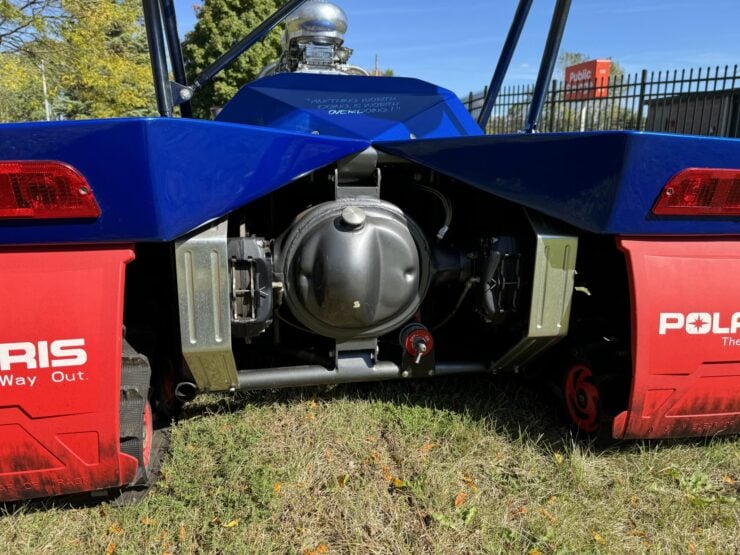
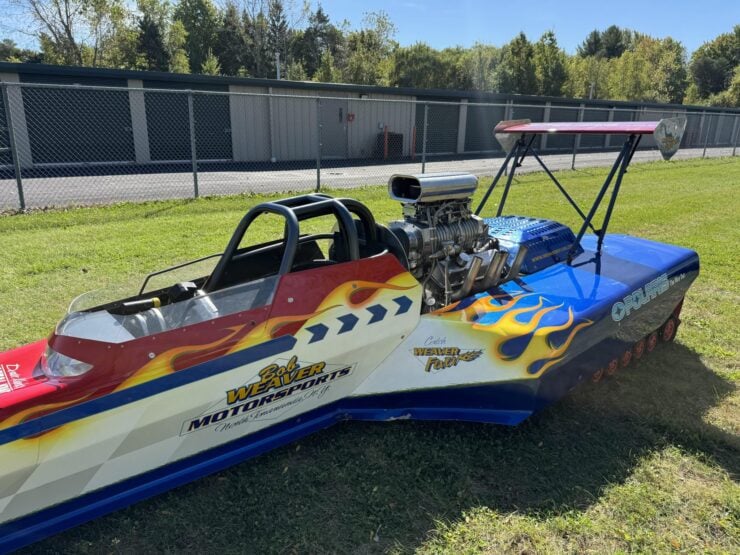
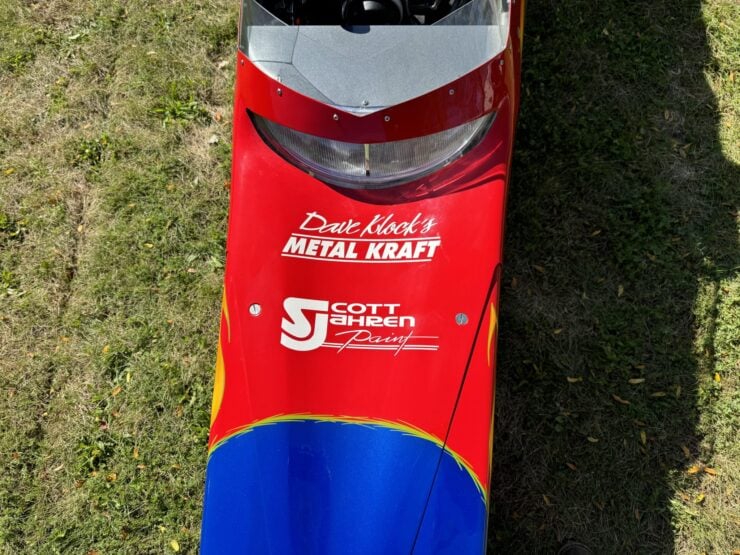
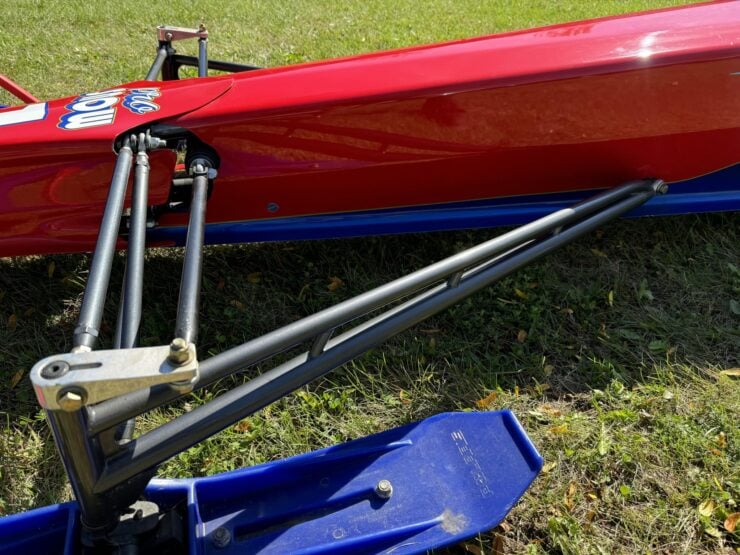
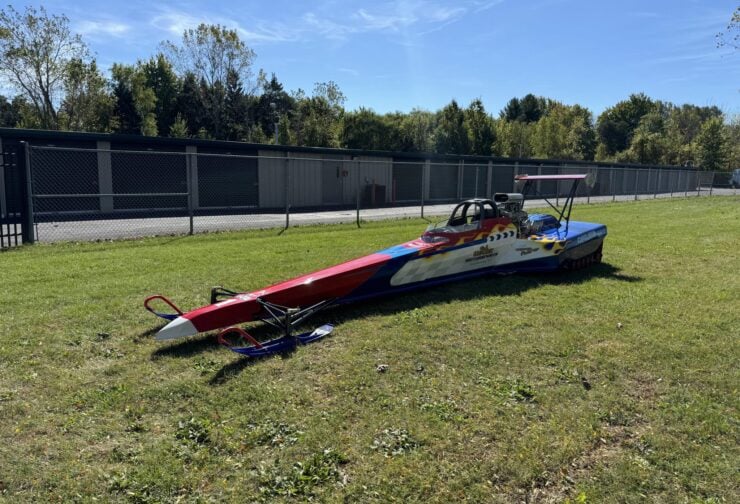
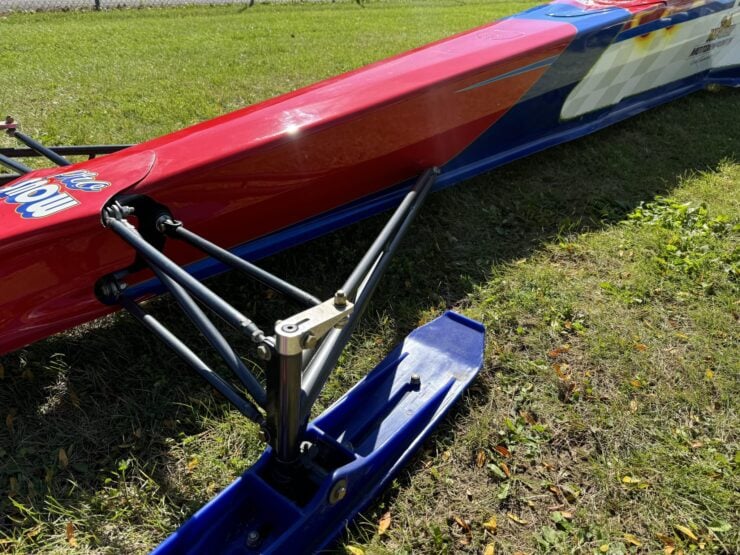
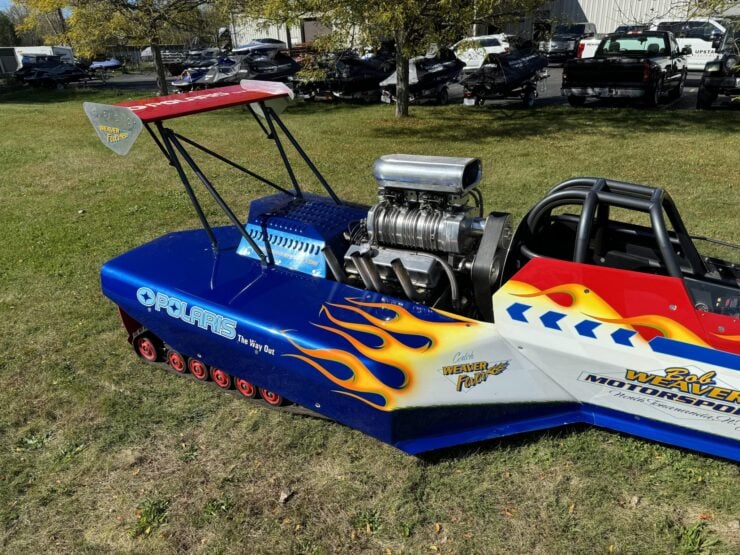
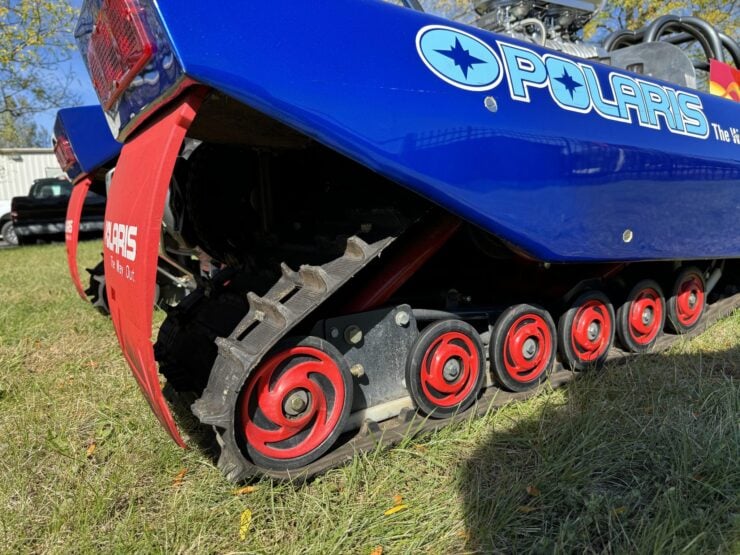
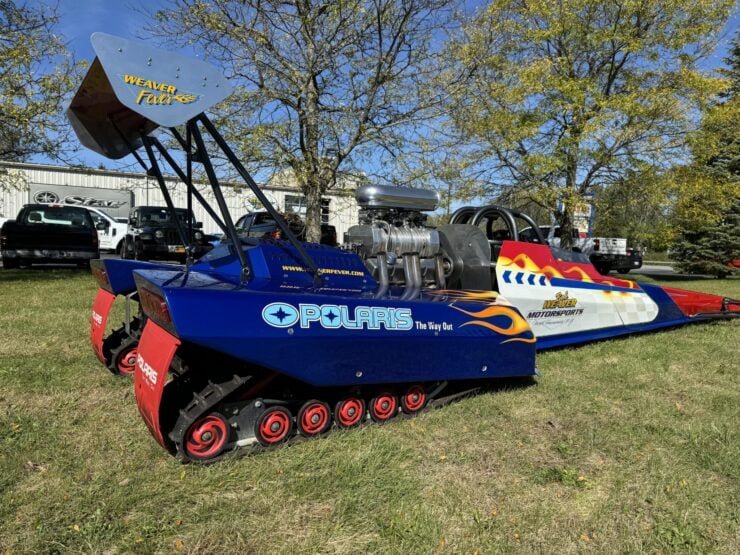
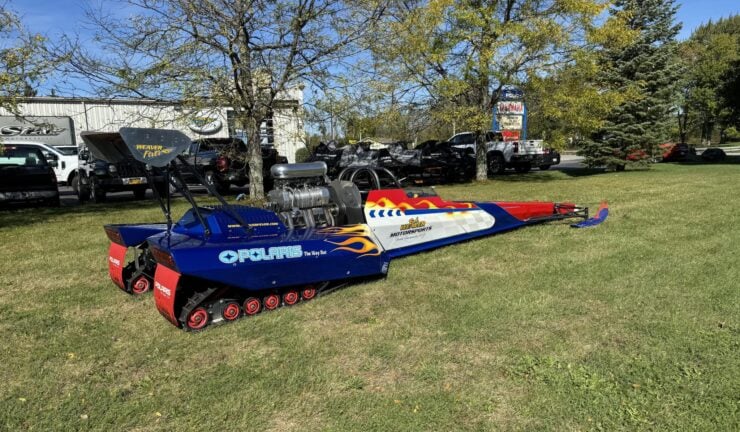
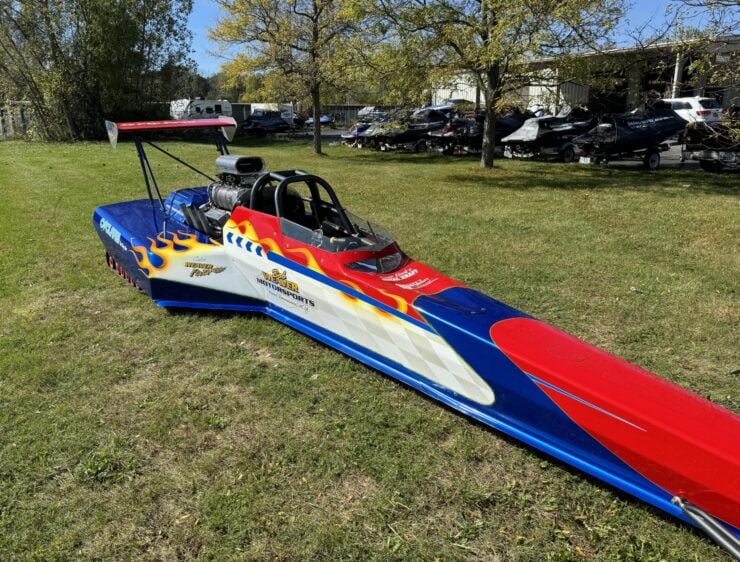
Images courtesy of Bring a Trailer

